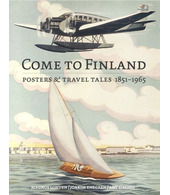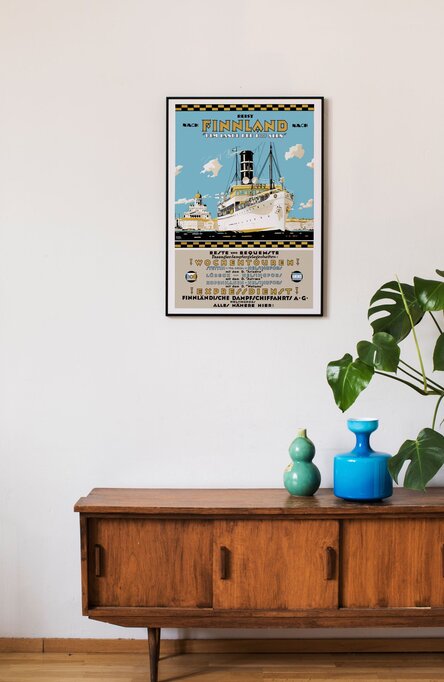The routes south to Tallinn, Stettin and Copenhagen and westwards to Stockholm had a double purpose. They sent Finns out into the world but also brought back a breath of fresh air from other countries. Traffic to Estonia was already popular in the 1930s, and the competition was just as tough as it is today.
The renowned Finnish author Mika Waltari travels to Europe in 1929, as depicted in his book Yksinäisen miehen juna (The Lonely Man’s Train). It is the legendary ship Ariadne – interpreted by the marine artist Harry Hudson Rodmell in this poster – which takes him out into the big world via Tallinn in Estonia to Stettin in Germany:
”The moorings are cast off and the Ariadne glides away from the quay and turns slowly. A last wave goodbye with tearful handkerchiefs that look like tiny white specks on the quay, people start to disperse to find out who’s on board, look for acquaintances and reserve seats at the dinner table. […]
The first whisky and sodas have imperceptibly materialised in the smoking saloon. Most of the travellers on their way to Tallinn have occupied the majority of the wicker chairs in the restaurant. Some older women have already sought out mutual acquaintances and are sitting in a closed group with their heads together and remembering little stories about their fellow passengers. The conversation in the smoking saloon is becoming louder and more uninhibited.
A sea voyage consists of relaxation and a leisurely transition from one meal to another, and one soon becomes apathetic if one cannot find a suitable travelling companion.
I manage to find the right travelling companion, as lonely as I am, an amiable and understanding travelling companion who can talk about philosophy or world events or just remain silent. We drink our whiskies and sodas and immerse ourselves in our contentment with life. The towers of Tallinn appear on the skyline. Some of the passengers prepare to disembark. The sound of a gong invites us to dinner. […]
In the evening the sun has gone down behind the sea in a violet and red mist. The orchestra strikes up – Finnish folksongs with a sad, lyrical feeling that the darkness of a pine forest, the shimmer of a small lake, the peacefulness of a quiet country road, and the murmur of a heath.”




